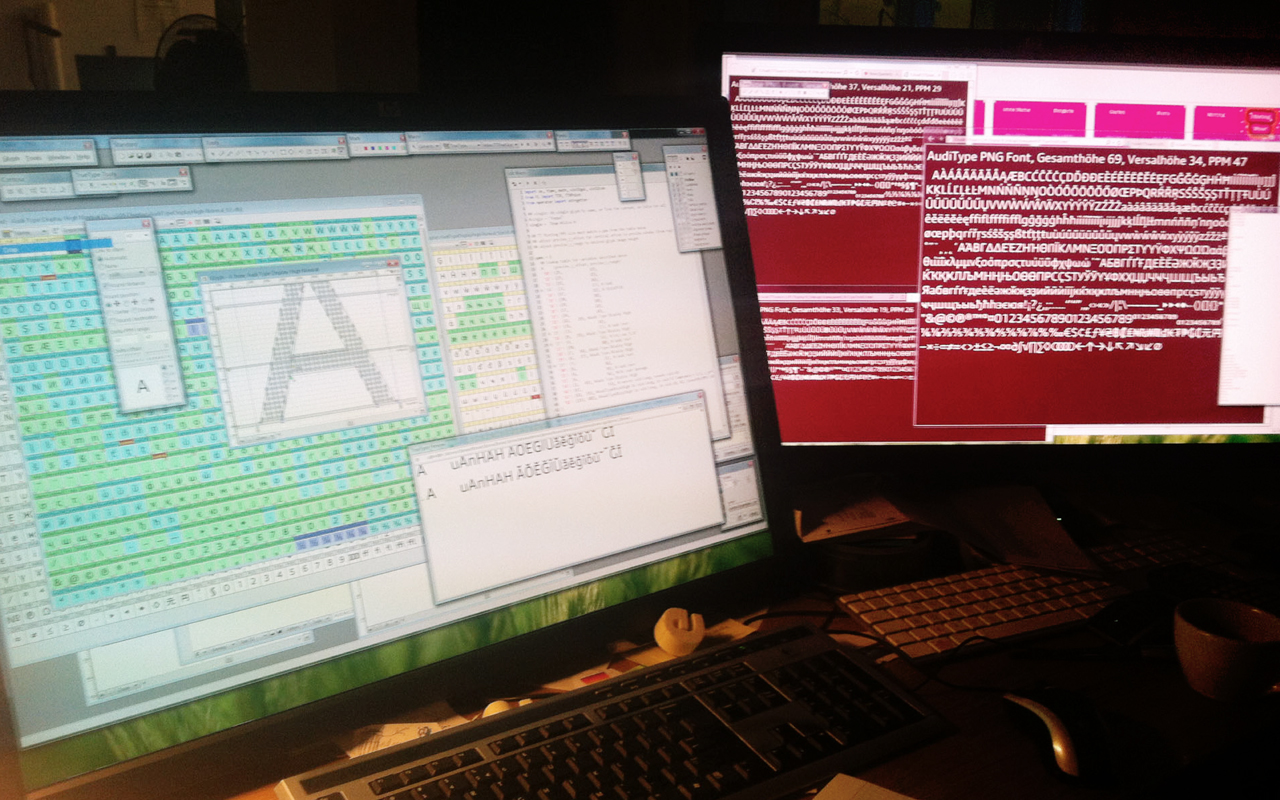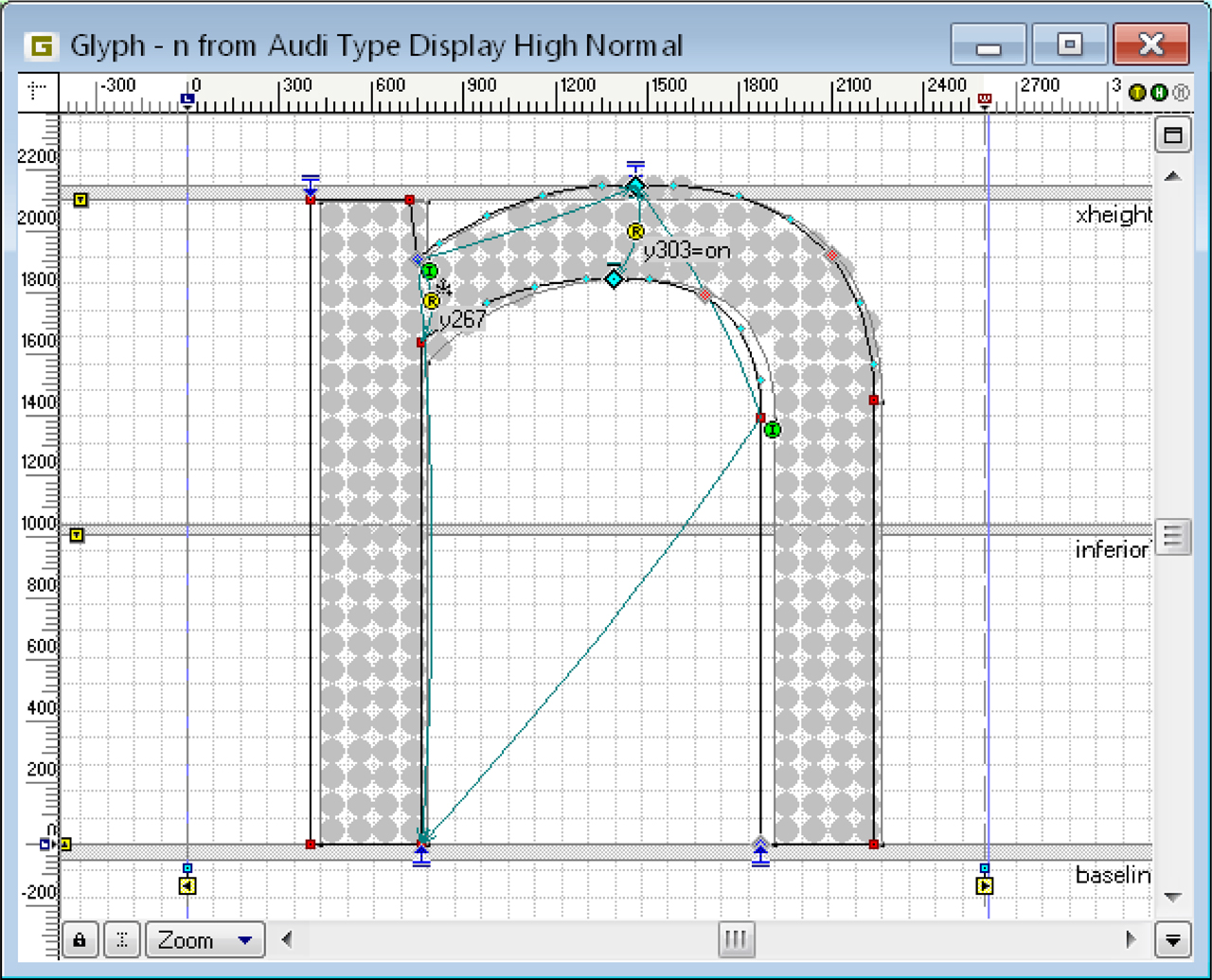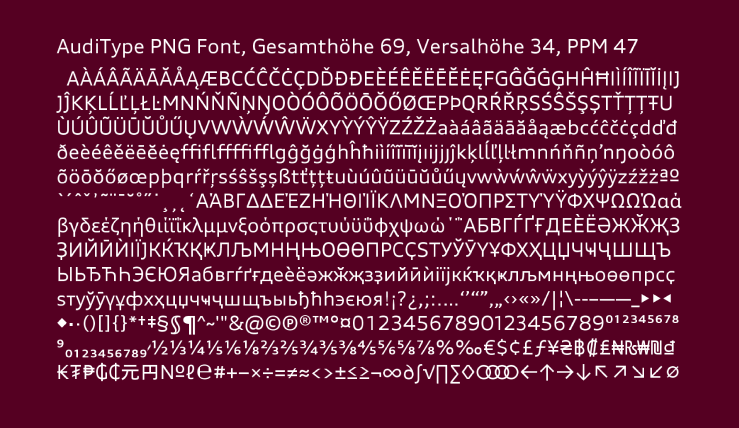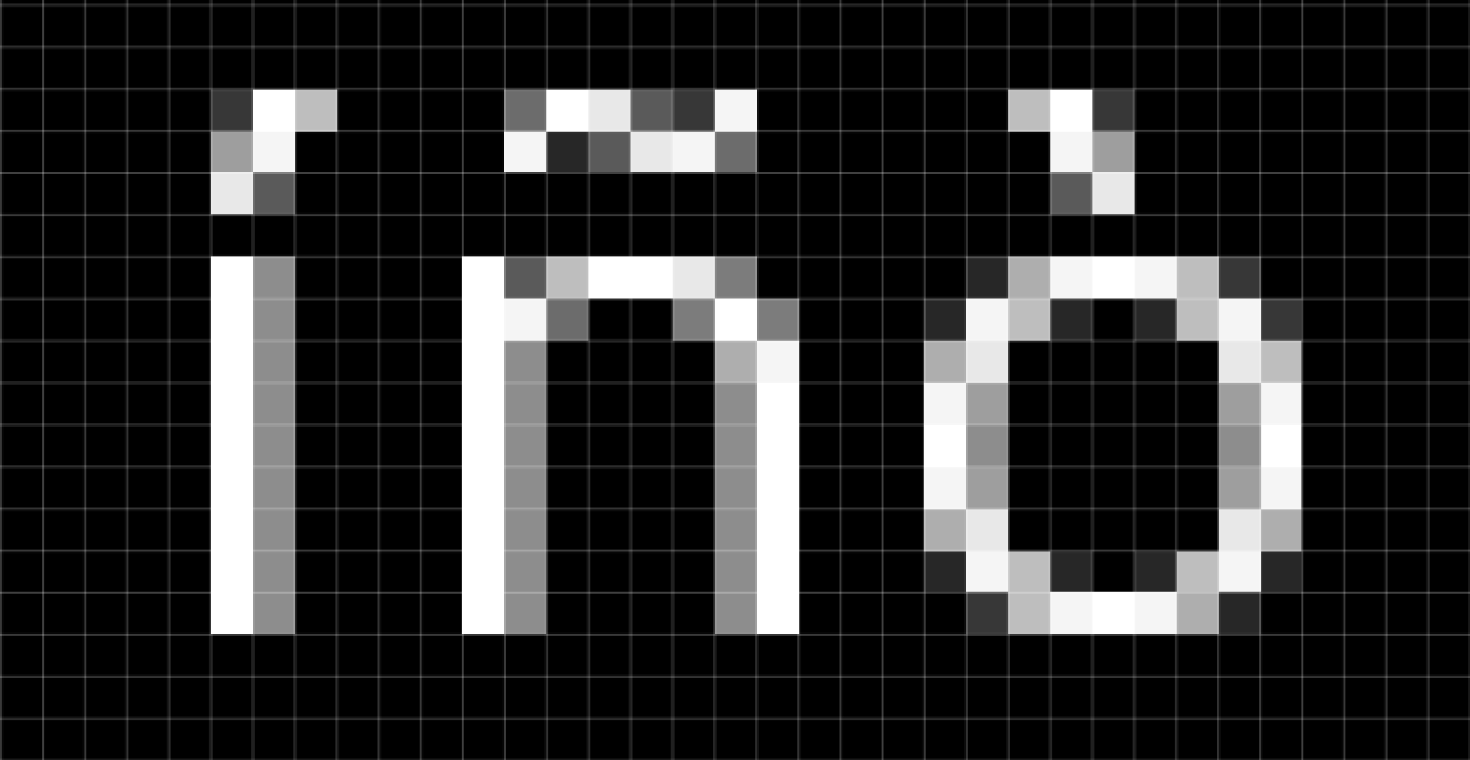Audi
The Dutch type design studio Bold Monday created Audi Type in 2009. This family is the corporate typeface for Audi. MetaDesign here in Berlin commissioned the work as part of an Audi identity redesign. Bold Monday asked Luc(as) de Groot to manually hint the TrueType versions of the fonts. As a next step, Luc(as) created size-specific PNG fonts. Embedded in Audi’s in-car displays, these fonts are described in more detail below.

Since Luc(as) uses hinting as a design tool, he usually only hints fonts of his own design. For instance, while he developed the Calibri fonts for Microsoft, he could edit a letterform’s hints and character shapes at the same time. When a designer hints a pre-existing font, they invest their time in making that design work best within a certain rendering environment, but cannot go so far as to change the glyphs’ structures. Bold Monday’s design for Audi was cool enough that Luc(as) made an exception.
Once Luc(as) had hinted the TrueType fonts, Audi’s interface designers began using them in Photoshop, which uses its own smoothing method. Since the Audi Type’s TrueType fonts had not been hinted to work together with the Adobe rasterizer (used neither in dashboard displays nor in Microsoft Office products), the letterforms looked too dark in their mock-ups.
This presented an interesting challenge: Luc(as) needed the vertical stems of the AudiType letterforms to have exact widths of 1 3/8 of a pixel on-screen in the app. His solution was to apply size-specific deltas to the glyphs’ horizontal and vertical stems and then generate PNG pixel fonts. Every glyph in the resulting 11 size-specific fonts was a 4-bit file consisting of a white letterform on a transparent background. This gave Luc(as) 16 different grayscale values to work with. Niels Poppe programmed a special tool that would take Luc(as)’s delta-hinted font files and generate all the PNG files. The whole process was a lot of work, and it required a great deal of innovation in the internal LucasFonts tool space.


These size-specific PNG fonts are embedded in the Audi cars directly. This means that in-car operating system does not have to have a text-rasterizing engine. A rasterizer converts outline fonts to pixels, but Luc(as)’s size-specific PNG fonts were already pixel. This is an efficient method of font embedding and does not require the car’s software to perform any kind of conversion.
Luc(as)’s next step with his size-specific PNG fonts was to add kerning. He created a kerning list for each font, which was just an Excel spreadsheet for all kerning pairs needed, with the kerning information listed in whole pixel values.
